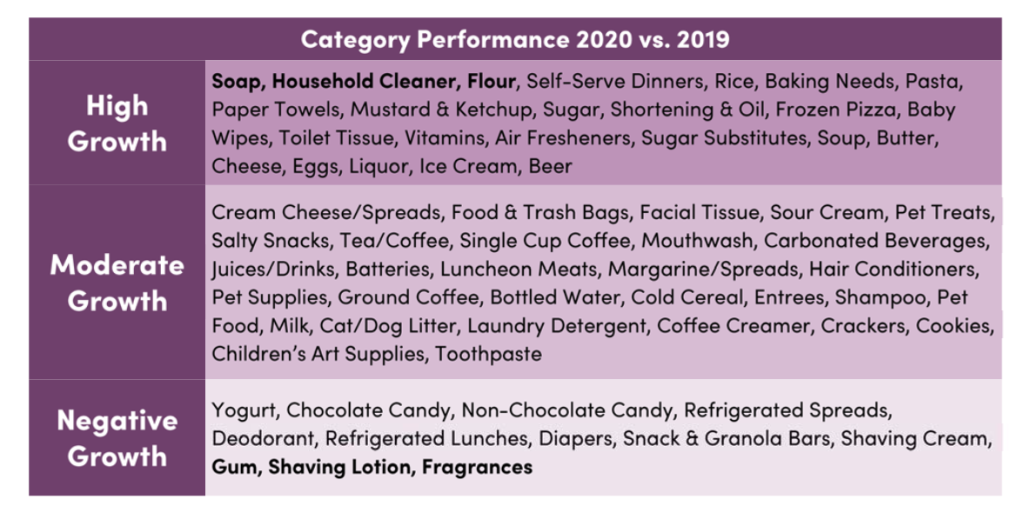What changed and what should retailers do?
The grocery retailing industry was already undergoing a slow transformation when the COVID-19 pandemic hit. Although only 3% to 4% of U.S. grocery sales were online in 2019, retailers had been investing heavily in e-commerce capabilities for a few years. As online grocery offerings increased, shoppers started ordering groceries online and choosing between curbside pickup and home delivery of their orders. The pandemic accelerated this gradual change: Online retailers captured market share from established brick-and-mortar players who had to quickly adapt to new in-store consumer purchase behavior and patterns. Panic buying challenged supply chains of both kinds of retailers, leading to widespread stock-outs and customer frustration.

Dinesh K. Gauri
Consumer preferences and behavior have likely changed for good, and may never fully revert to the pre-pandemic era. Retailers need to understand the impact of the pandemic on sales patterns to modify their retail strategies accordingly and thrive in the “new normal.”
We looked at sales patterns across various retail formats that sell groceries in the United States. We obtained the data on U.S. grocery sales from IRI. COVID-19 mortality data in the U.S. was obtained from the Centers for Disease Control and Prevention (CDC). Based on our analysis, we developed four insights for retailers navigating the challenges of the pandemic.
• Online grocery shopping increased exponentially during the pandemic. To continue their dominance, brick-and-mortar retailers must focus on the customer purchase experience.

Rupinder Jindal
During the pandemic, no retail format grew as much as internet retailers. Online grocery shopping was already growing during January and February of 2020, up 20% to 30% over the same months in the previous year. The pandemic greatly accelerated this growth and helped it gain traction among otherwise hesitant consumers. Dollar sales were up around 130%, and shopping trips were up 150% or more year over year (YoY) in April and May. YoY growth slowed down in the following months but was still around 90% for both dollar sales and shopping trips; it was four to five times the growth rates of other retail formats, and captured market share from them. This suggests a permanent shift in consumer preferences toward online grocery shopping may be under way.
This growth could have been prompted by social distancing recommendations at the start of the pandemic. Ordering groceries online was one way to do so and stay safe. But shoppers have also come to appreciate the convenience associated with shopping online. When asked for top reasons to shop online, 64% of consumers cited comfort of shopping from home, and 60% noted free shipping or delivery options.
To compete with the growth of internet retailers, brick-and-mortar grocers should embrace omnichannel retailing. They should increase their online offerings, integrate them with their existing physical infrastructure in the form of pickup and drop-off options, and improve customer experience to provide reasons for shoppers to stick with in-store shopping.
• Whereas most retailers increased their prices, club stores differentiated themselves by keeping them low. Enhancing private labels and providing optimal assortment would be critical going forward.
The pandemic brought great uncertainty around one’s health and safety — there was a big increase in the number of people infected with the novel coronavirus in spring of 2020; the number of deaths lagged the number of infections by about 10 days to two weeks. With rising infections many consumers prepared for the worst, indulging in panic buying and stocking up on whatever they could get, wherever they could get it. Because of this, YoY growth in sales shot up across all store formats.

Yu Ma
Growth in sales at dollar stores shot up from 10% in February to 66% in March, and at supermarkets growth shot up from 3% to 51% over the same duration. At club stores, YoY growth went from an increase of 8% in February to an increase of 37% in March. Sales growth for dollar stores and supermarkets, while still positive, fell sharply in April and generally trended downward throughout the year. However, sales growth at club stores accelerated again — though to a smaller extent — during the summer months.
Additionally, prices at club stores fell in March and April, coinciding with the sales increase. These low unit prices could have been the result of customers buying private label products if national brand products were out of stock. Increase in prices at dollar stores and supermarkets was much higher than at club stores during 2020 than in 2019. There could be several reasons for this disparity, including supply shortage due to their clogged supply chains or price increases by manufacturers of national brands to pass along their increased costs. Club stores have greater buyer power, including the influence of their already robust private labels, to resist such pressures.
Looking at both sales growth and price per unit, club stores may also have been able to unclog their supply chains before the summer, allowing customers to buy more products, even national brands, at club stores during the summer months. It could also mean that shoppers reduced their more frequent fill-up trips at supermarkets and instead headed straight to club stores to buy in bulk, and preferred private labels to save money. This helped club stores capture market share from other retail formats.
Other retail formats should take a leaf out of club stores’ playbook and beef up their private labels. They were already moving in this direction, but the pandemic provides another push and incentive to redouble their efforts. The trend of increased focus on reduced but optimal assortment during the pandemic would be critical for consumers as well as retailers and manufacturers as we come out of the pandemic. We believe that gone are the days of hundreds of cereals and chips choices on the shelves. Finding optimal assortment for the shoppers would be an important aspect for retailers’ and manufacturers’ strategy in the coming years.
• Sales of items on discount decreased during the pandemic. Retailers have an opportunity to wean customers away from deal-hunting, invest in supply chains and reduce friction in the purchase process.
When demand is so high that a product goes out of stock, there is little reason for retailers to offer deals or discounts. At the beginning of the pandemic, shoppers cared more about being able to find an item than hunting for a cheaper price. Because of this, items were frequently selling out — even at full price.
But when demand skyrocketed, so did costs. Retailers incurred massive supply chain and operational costs as they tried to keep up with panic buying and new health regulations. However, they were hesitant to increase prices because of potential price gouging allegations. This led to reduced profits on otherwise booming sales. As the pandemic progressed, they looked for ways to pass these increased costs along to consumers. One way was to reduce the number of deals they offered.
Many retailers announced that they would not promote discounts until after social distancing measures were lifted. This move was ostensibly meant to reduce panic buying and crowding in stores. Instead of reinstating deals after panic buying subsided, the proportion of dollar sales from deals stayed well below 2019 levels throughout 2020. This could be because either shoppers were not that deal sensitive in the wake of stock-outs or retailers reduced the number or size of deals. Regardless, sales from deals decreased across supermarket, club, and dollar store formats and stayed down throughout the year.
There are already reports of food manufacturers planning to increase prices to offset their higher costs. This will bring pressure on retailers to go back to offering deals and discounts as they compete among themselves. However, if this pandemic has taught us something, it is that those with streamlined and robust supply chains are better placed to withstand such shocks as a pandemic. Although a very difficult decision to make, retailers are advised to focus less on attracting customers via deals and instead focus on their supply chains, offering a safe and sanitary customer purchase experience, and use technology to reduce friction in the purchase process.
• Some categories (fragrances, shaving lotion, gum) lost, while others (soap, cleaners, flour) won share during the pandemic. Search by “work from home” would become a key criterion in online algorithms, and in-store space should be allocated accordingly.

Category performance based on year-over-year change (2020 vs. 2019) in dollar sales
The pandemic dramatically changed the lifestyle of shoppers, which was reflected in their shopping patterns. People were stuck at home for the most part, rendering many essential products nonessential. Shoppers bought less deodorant, fragrances, gum and shaving cream during the pandemic. These personal hygiene items may be essential for social interactions, but they are less necessary when stuck at home. Retailers attempted to reduce prices of men’s and women’s fragrances and other poorly selling products to try to clear out their inventory. However, because consumers were not leaving their home to go to the office or to socialize, these items still didn’t sell. Shoppers also purchased fewer snacks and granola bars and refrigerated lunches, as taking sack lunches to work or school was no longer required.
The pandemic has changed almost every aspect of life, including how often people will travel to their schools and offices in the future. The new way of living — work from home (WFH) — is here to stay. Retailers need to study changing patterns in various product categories and add WFH to their decision algorithms. They should make finding these items easier for shoppers — both online and in the stores. Even though stock-outs may have made some aisles bare in the stores, those aisles are actually the ones that should be allocated even more space going forward, as these are the ones which most shoppers “really” needed during the pandemic.
In conclusion, the pandemic will end eventually, but we will likely not fully return to how things were before 2020. Grocery retailing has changed dramatically, and some of these changes will likely remain in the new normal. The pandemic has changed consumers’ expectations of retailers, making exciting differentiation opportunities available to the retailers and manufacturers to carve out a unique position for themselves in shoppers’ minds. Retailers will need to engage with shoppers by offering an omnichannel seamless shopping experience, reducing purchase friction, offering value via their unique private labels, reducing the focus on deals and discounts, investing in robust supply chains, and including WFH as an important classification for shopping online and in-store.




You must be logged in to post a comment Login